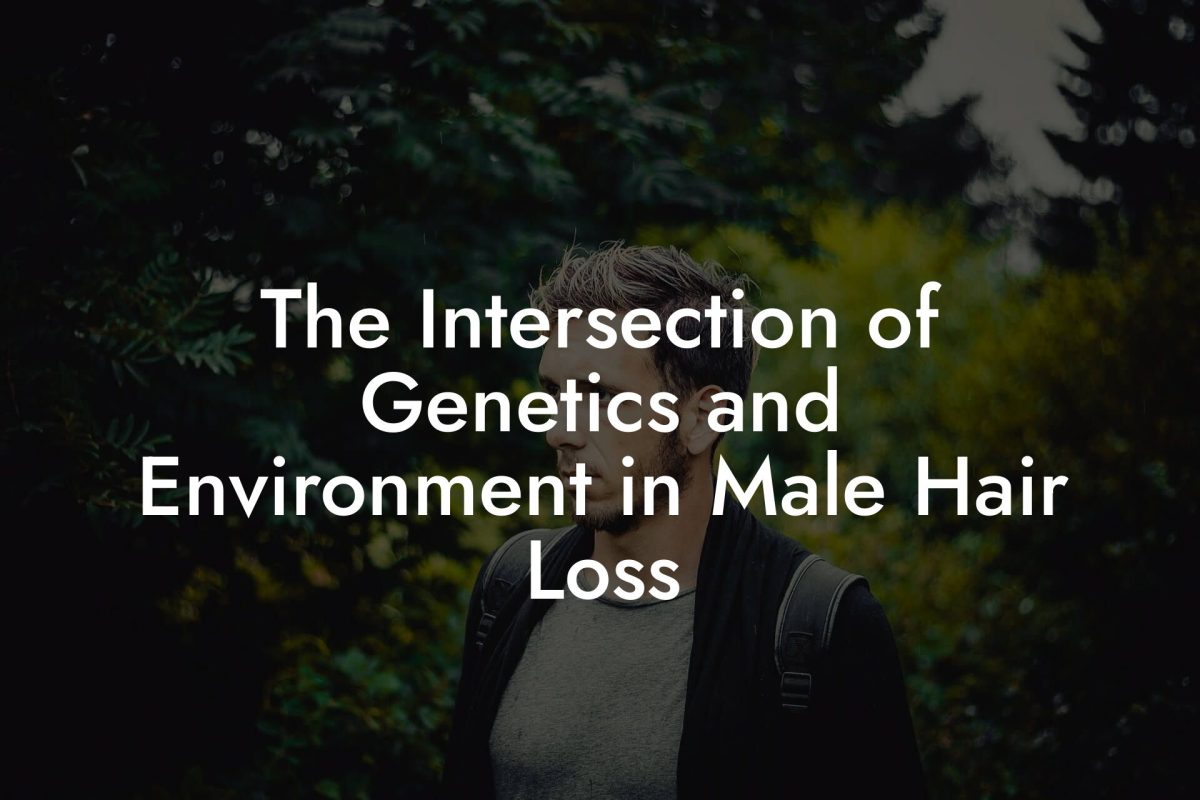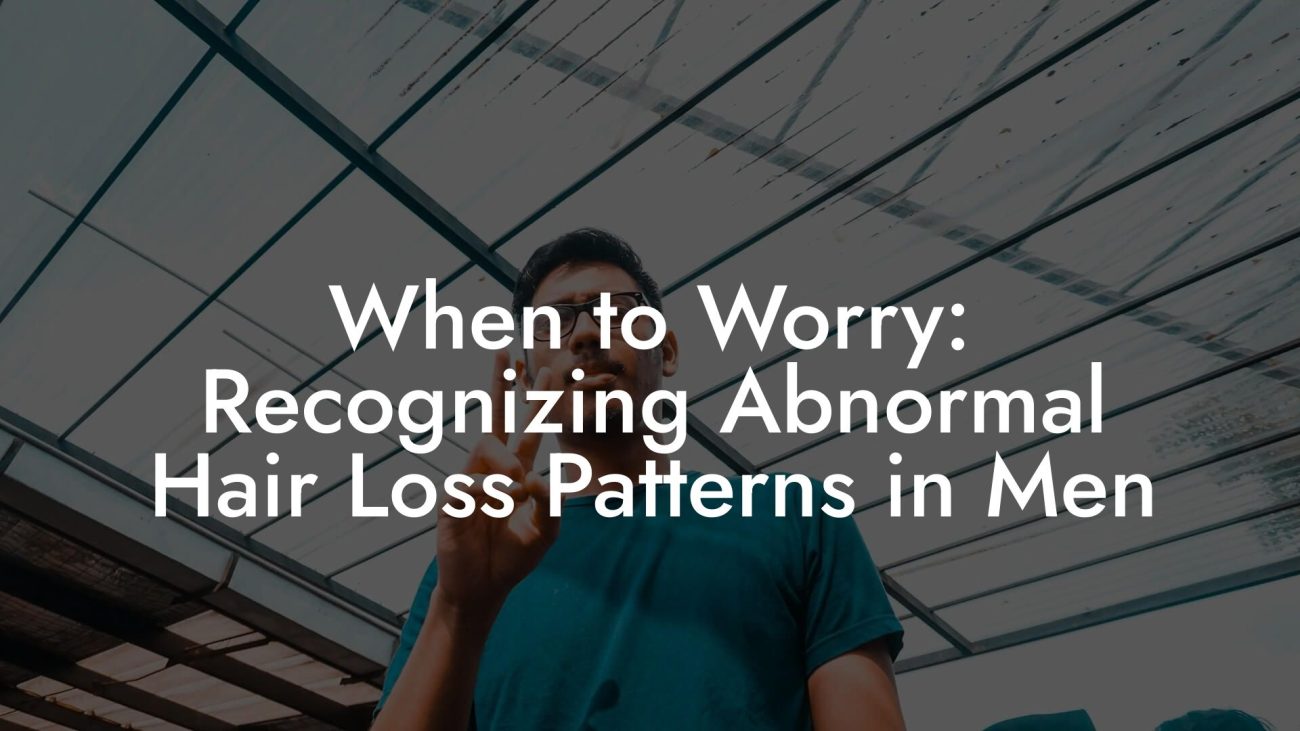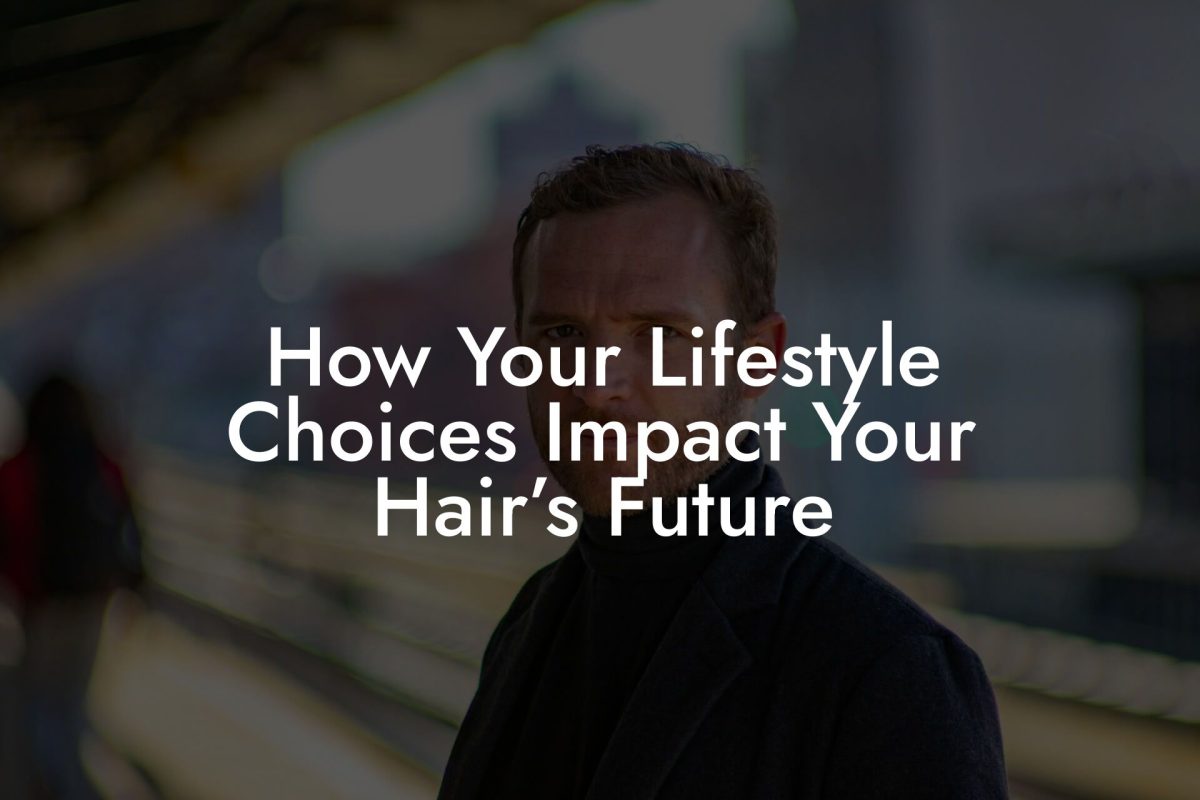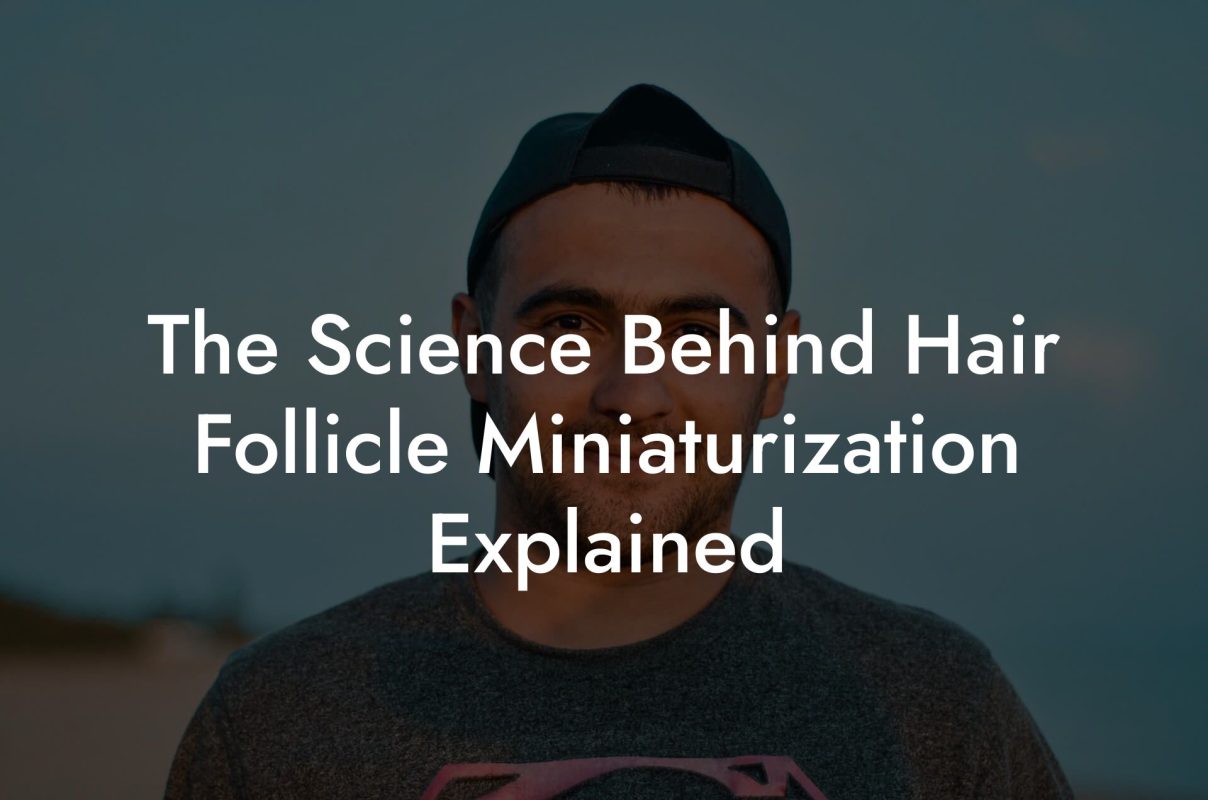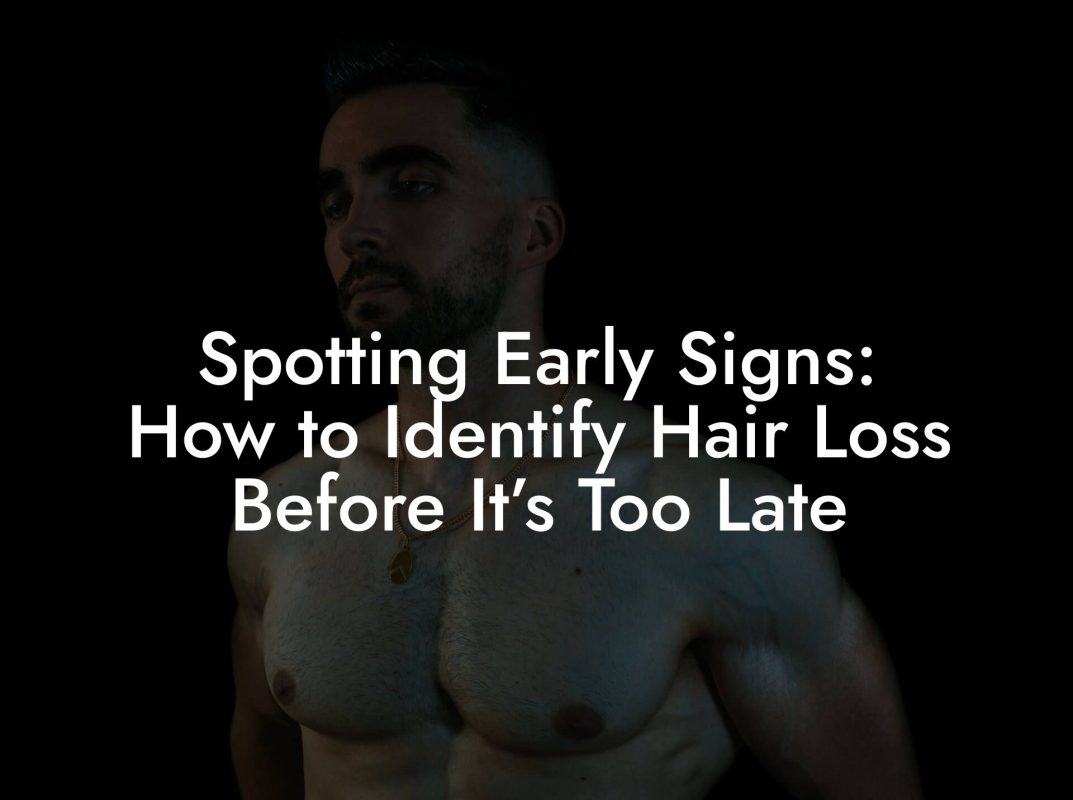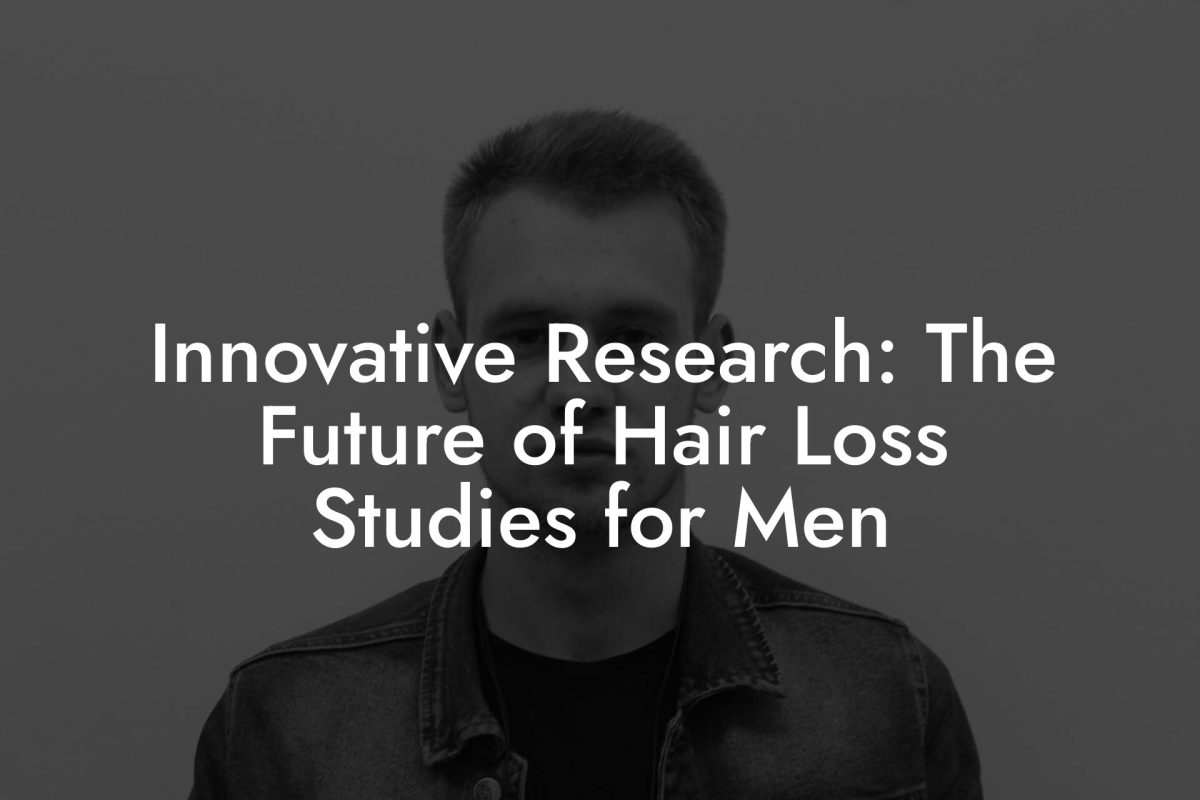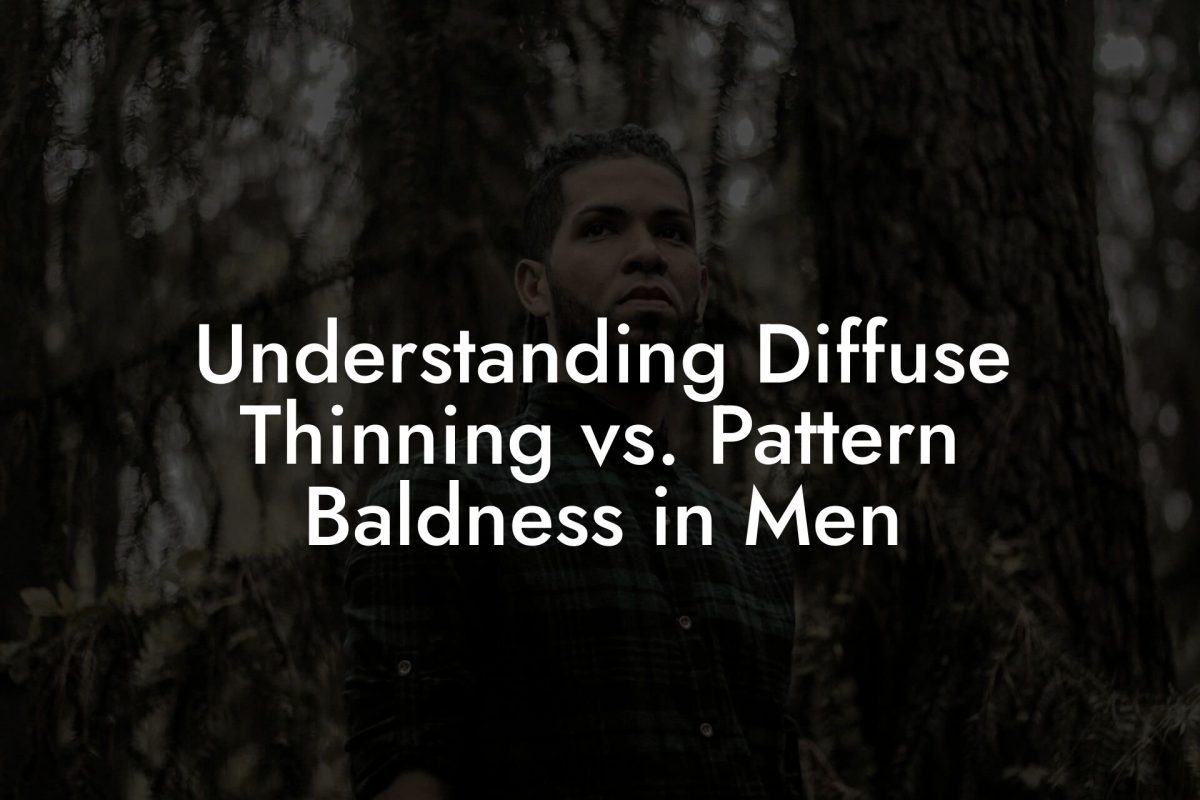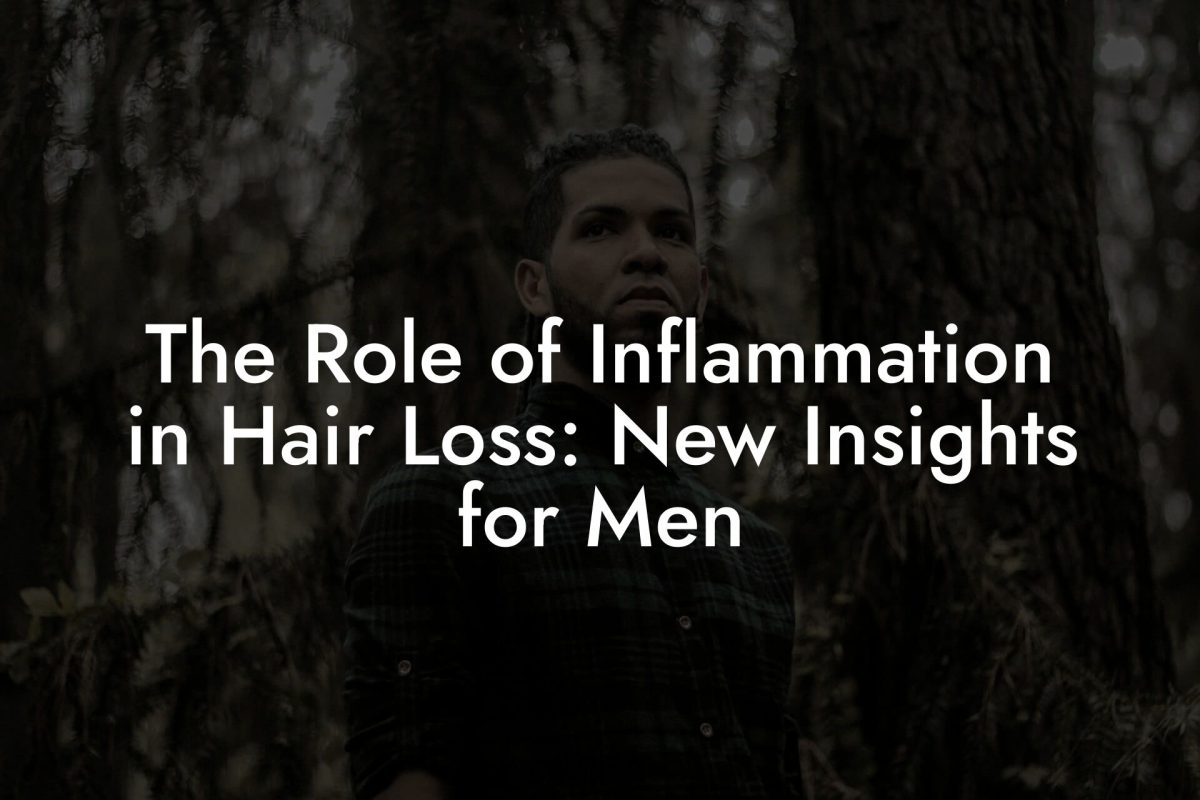Hair Loss Library
Hormones & Hair: How Testosterone Impacts Hair Loss in Men
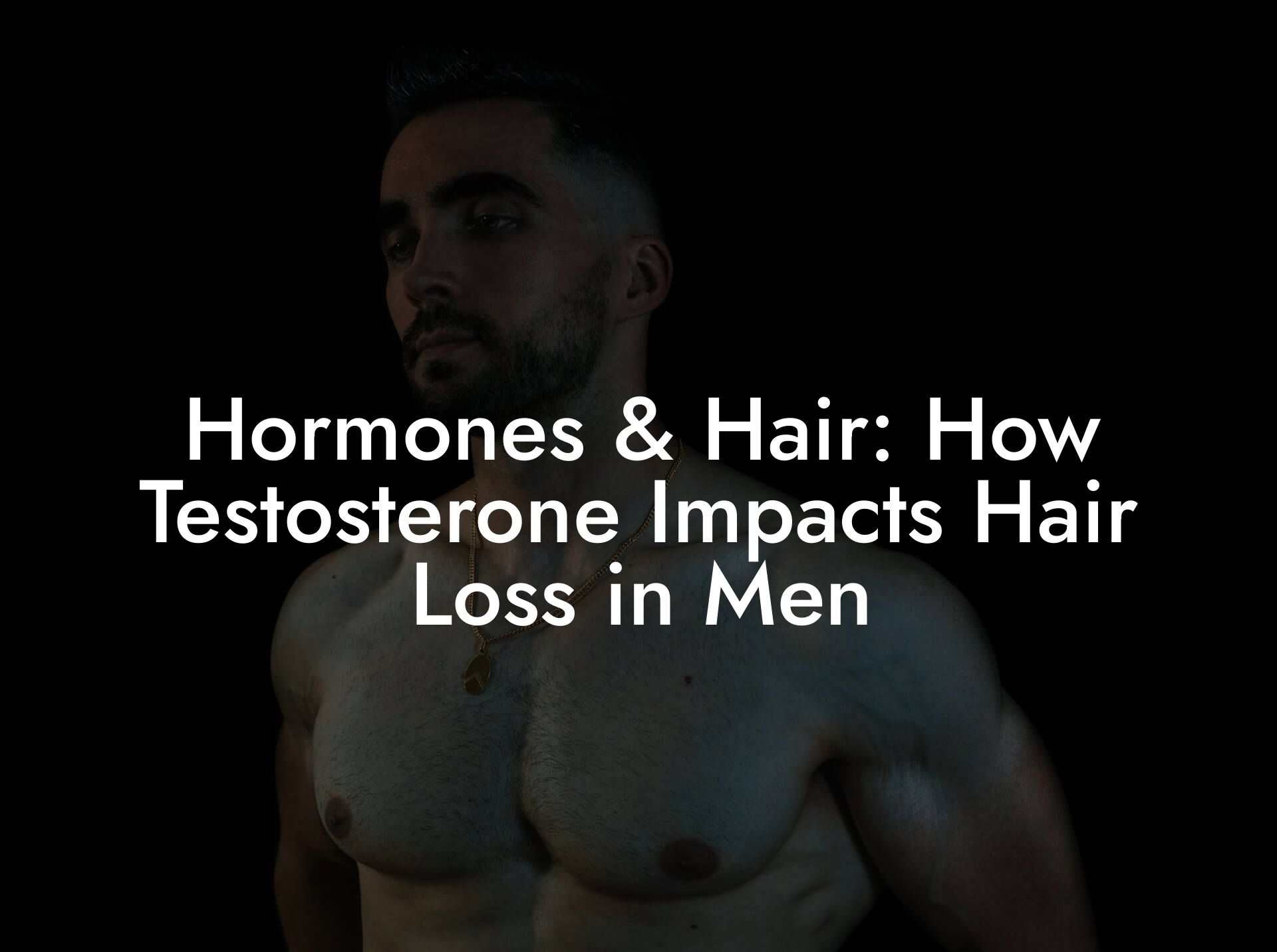
Ever had one of those mornings when you stare at your reflection and wonder if your hairline is secretly auditioning for a disappearing act? If you have, you're definitely not alone. Welcome to the wild world of hormones and hair—a place where testosterone, the macho hormone, might just be playing tricks on your locks. In this guide, we’re diving into the ins and outs of how testosterone impacts hair loss in men, serving up expert insights with a side of humor and plenty of practical tips. Get ready for a deep-dive that’s equal parts scientific and relatable, tailored for the unapologetically modern man.
Understanding Testosterone and Its Dual Identity
Testosterone is like that unpredictable friend who’s part party animal and part sensitive poet. It’s the hormone responsible for all those charming masculine traits—think deep voices, impressive muscle gains, and even a certain sparkle of confidence. But like any good character actor, testosterone has a dual side. While it's crucial for development and maintaining that rugged allure, it also plays a pivotal role in hair dynamics. Too much of this hormone, or its pesky derivatives, can lead to the thinning and eventual loss of hair.
In the realm of mens hair care, understanding testosterone means deciphering the complicated balance between its benefits (strength, vitality, and enhanced muscle tone) and its potential drawbacks, especially when it comes to your crowning glory. For many men, the very hormone that fuels their drive to excel can simultaneously turn against their hair follicles.
The Science Behind Testosterone and Hair Loss
Let’s get a little geeky. At the core of male pattern hair loss is a hormone derivative known as dihydrotestosterone, or DHT for short. DHT is created when testosterone meets the enzyme 5-alpha reductase, triggering a chemical transformation that can be both a blessing and a curse. While DHT supports various bodily functions, it’s also a notorious culprit for miniaturizing hair follicles, the tiny structures responsible for hair growth.
When DHT binds to receptors in hair follicles, it causes them to shrink over time, making it harder for hairs to grow thicker and stronger. This process, which is largely genetically predetermined, is what many of us know as androgenetic alopecia or, more casually, male pattern baldness. The brave irony is that the very hormone that helped build your biceps might just be masterminding your hair’s exit strategy.
Researchers have long been fascinated by this hormone-hair loss connection, and decades of study have confirmed that while testosterone itself isn’t the direct enemy, its conversion to DHT is a central player in hair loss. The science points out that not all men are affected equally; genetics often tip the scales on who might lose more hair than others.
Busting the Myths Around Testosterone and Hair Loss
Rumors, myths, and urban legends about hormones and hair loss have swirled around longer than that classic 80s hair metal playlist. One of the most common misconceptions is that high testosterone levels automatically mean you’re destined for baldness. Not quite! In reality, it’s not the absolute level of testosterone that matters, but rather your body’s sensitivity to DHT and how your genes play into the whole biochemical drama.
Another myth that dances around is the notion that testosterone treatments universally lead to hair loss. While hormone replacement therapies can influence hair growth due to increased DHT levels, the reality is far more nuanced. Your genetic predisposition, overall health, and even environmental factors determine the outcome. And let’s be honest, if managing your testosterone could guarantee eternal youth and a mane like David Beckham’s, we’d all be lining up for injections!
The bottom line? Don’t blame your hormones entirely for your thinning tresses. It’s a complex interplay of genetics, enzyme activity, and lifestyle choices that together shape your hair’s destiny.
Testosterone, DHT, and Hair Follicle Dynamics
Picture each of your hair follicles as a tiny factory with a production line that churns out strands of hair. In a well-oiled machine, everything runs smoothly. However, when DHT starts to infiltrate, it becomes the equivalent of a disruptive intern who just can’t help but mess things up. Over time, as more and more follicles receive too much DHT, they begin to produce thinner hairs – or sometimes none at all.
This miniaturization process doesn’t happen overnight. It’s a gradual evolution where robust, full-thickness hair is replaced by fine, wispy strands that are often prone to falling out. The exact mechanics involve a reduction in the hair follicle cycle, shortening the growth phase (anagen) and prematurely triggering the shedding phase (telogen). Understanding this timeline is key when considering treatment options or preventive measures. After all, patience and persistence are as essential to hair health as they are to any modern beauty regimen.
The cycle might sound droll from a distance, but for many men, it’s an uninvited narrative that plays out over decades. Fortunately, modern science and innovative treatments are equipping us with tools to fight back against this tiny industrial sabotage.
Genetics vs. Hormones: The Ultimate Showdown
Imagine an epic wrestling match where your genes slam down on hormone behavior while testosterone plays referee. In the ring of hair loss, genetics are the reigning champions—they determine the sensitivity of your hair follicles to DHT. Some men are genetically blessed with follicles that shrug off DHT’s attempts at miniaturization, while others might have follicles that are more passively prone to thinning.
The interplay between your DNA and your hormones means that no two hair loss journeys are exactly alike. Your family history can be a strong indicator of what you might expect down the line—but it’s not an unchangeable fate. Lifestyle choices, environmental factors, and proactive treatments all have the potential to influence how and when hair loss manifests.
Here’s the kicker: While you can’t rewrite your genetic code, you can certainly optimize your overall health and work with your hormonal landscape to manage hair loss. It’s less about fighting nature and more about harmonizing with it—like negotiating with that unruly friend who’s perpetually fashionably late.
Lifestyle Factors That Tip the Scale
When it comes to testosterone and hair loss, your everyday choices can swing the balance either in your favor or against you. Stress, diet, sleep, and exercise are all pieces of a complex puzzle that contribute to your overall hormonal profile. Let’s break down a few key lifestyle factors:
Stress: The Unwanted Co-Pilot
Chronic stress is like that unwelcome plus-one at a party—it tends to overstay its welcome and complicate things. When you’re stressed, your body produces cortisol, a hormone that can indirectly contribute to hair loss by disrupting the normal hair cycle and accelerating follicle shrinkage. Incorporating stress-management practices like meditation, regular exercise, and even humor (yes, laughing truly is medicine) can help keep cortisol levels in check.
Nutrition: Fueling Your Follicles
They say you are what you eat, and in the battle against hair loss, your diet is your secret weapon. Foods rich in vitamins, minerals, and antioxidants—such as leafy greens, nuts, and fatty fish—can support hair health by reducing inflammation and bolstering repair processes. Conversely, diets high in sugar and processed foods might tip your hormonal balance towards a state that favors hair loss.
Exercise: A Balancing Act
Regular physical activity not only keeps your body and mind in top form but also helps modulate hormone levels. Engaging in both weight training and cardio can naturally boost your testosterone levels while keeping stress hormones at bay. Just remember, balance is key—excessive exercise without proper recovery might actually exacerbate stress and yield diminishing returns.
Sleep: The Unsung Hero
Sleep is nature’s restart button. Without adequate rest, your body’s ability to repair and regenerate—including hair follicles—takes a hit. Prioritizing quality sleep helps regulate hormone production and keeps your body in a state that supports growth and renewal. The next time you consider pulling an all-nighter, think about your hair and its need for a good night’s sleep.
Treatment Options: From Medications to Natural Remedies
If lifestyle modifications haven’t quite staved off the reckless advance of DHT, don’t worry—there’s a smorgasbord of treatment options available. Whether you prefer modern medicine or everyday natural treatments, there’s something for every man looking to reclaim his mane.
Prescription Medications
Medications like finasteride and dutasteride work by inhibiting the enzyme responsible for converting testosterone to DHT. While these drugs have been shown to slow hair loss and, in some cases, promote regrowth, they do come with potential side effects. It’s essential to have a candid conversation with your healthcare provider to weigh the benefits against any risks.
Topical Treatments
Minoxidil is a well-known topical solution that helps stimulate hair follicles and prolong the growth phase. This over-the-counter treatment might require daily application, but many men swear by its effectiveness in keeping alopecia at bay. Just remember, consistency is key!
Low-Level Laser Therapy (LLLT)
Harnessing the power of light, LLLT uses specialized devices to energize hair follicles and promote cellular activity. This treatment is non-invasive and has the added perk of being both pain-free and relatively hassle-free once you incorporate it into your routine.
Natural Remedies and Supplements
For the man who prefers a more holistic approach, certain natural remedies and supplements might offer a gentle boost. Ingredients like saw palmetto, which is thought to block DHT, biotin, and other nutrient-rich supplements can be considered. Always check with a health professional before starting any new supplement regimen, especially if you’re already taking medications.
The takeaway? Whether you opt for the high-tech route or try out natural supplements, there’s a pathway to managing your hair loss. The best approach may well be a combination of treatments that suit your lifestyle, biology, and, of course, your personal style.
Preventative Measures: Daily Habits to Protect Your Mane
Prevention is always better than cure, and that holds true for your hair as much as any part of your body. Cultivating healthy daily habits can make a significant difference in managing testosterone levels and protecting your follicles from premature aging.
Smart Hair Care Routines
Start by treating your hair like royalty. Use gentle shampoos and conditioners, avoid excessive heat styling, and give your scalp a good massage every once in a while. Stimulating the scalp with a light massage can promote blood circulation—and we all know better circulation means happier hair!
Mindful Grooming
When it comes to grooming, less is sometimes more. Over-washing and heavy chemical treatments can strip your hair of natural oils, leaving it weak and brittle. Embrace a routine that respects your hair’s natural balance. It might mean taking extra time with a nourishing conditioner rather than rushing through a shower.
Shifting Diet and Lifestyle
As discussed earlier, your diet plays a pivotal role in hormonal balance. Think of incorporating more omega-3 fatty acids, lean proteins, and a rainbow of fruits and veggies into your meals. Coupled with an active lifestyle and stress management techniques, your body will be in prime shape to naturally ward off the adverse effects of DHT.
Developing these preventative strategies isn’t just about maintaining a full head of hair; it’s about embracing overall well-being. Healthy hair is often a reflection of a healthy lifestyle.
Case Studies: Real-Life Hair Comebacks
Now, let’s step away from the lab coats and textbook jargon for a minute and indulge in some real-life stories. What better way to illustrate the testosterone-hair loss conundrum than by showing you examples of men who have taken charge of their hair health?
Case Study 1: The Office Trailblazer
Meet Tom, a 32-year-old marketing maverick who began noticing subtle signs of hair thinning right as he was climbing the corporate ladder. Rather than shrugging it off, he consulted with a specialist and learned about the connection between his high DHT levels and family history. With a strategic mix of lifestyle adjustments, targeted medications, and a revamped hair care routine, Tom not only slowed down his hair loss but also boosted his confidence in the boardroom. His journey underscores that proactive management and informed decisions can make a real difference.
Case Study 2: The Weekend Warrior
Then there’s Mike, a 40-year-old fitness enthusiast who loved his weekend hikes and weightlifting sessions. When he noticed his hair getting thinner, he didn’t panic. Instead, he did his homework—balancing his rigorous exercise regimen with a nutrient-packed diet and learning about the importance of recovery and sleep. By incorporating topical treatments and supplementing with natural ingredients like saw palmetto, Mike managed to regain control over his hair’s health. His story reveals the importance of integrating fitness with tailored hair care.
Case Study 3: The Tech-Savvy Trendsetter
Lastly, consider Jordan, a 28-year-old software developer who found himself grappling with unexpected hair loss amidst deadlines and all-nighters. Using low-level laser therapy devices at home and embracing a holistic routine that included mindfulness meditation and smart grooming practices, Jordan managed to slow his hair loss and even stimulate some regrowth. His approach combined modern technology with self-care, proving that innovation isn’t just for the boardroom—it can work wonders on your scalp too.
These case studies highlight that, while the biology of hair loss is complex, individual journeys can be successfully navigated with the right mix of strategy, determination, and professional guidance.
Creating Your Personalized Hair Health Plan
Just as no two hairlines are identical, your plan to tackle hair loss should be uniquely yours. Building a personalized hair health plan is all about assessing your current condition, understanding your genetic predisposition, and integrating treatments and lifestyle tweaks that work for you.
Step 1: Comprehensive Assessment
Kick off your journey with a detailed assessment. Consult a hair loss specialist who can run tests to determine your DHT levels, evaluate your hair density, and review your family history. This initial evaluation forms the cornerstone of your personalized strategy.
Step 2: Define Your Goals
Whether your aim is to slow hair loss, stimulate regrowth, or simply manage the process with confidence, establishing clear, achievable goals is crucial. Consider both short-term milestones and long-term aspirations as you build your action plan.
Step 3: Integrate Treatments
With your assessment and goals in hand, design a tailored regimen that could include a mix of prescription medications, natural supplements, low-level laser therapies, and topical solutions. Combine these with lifestyle improvements like diet tweaks and stress management techniques for the best results.
Step 4: Establish a Routine
Consistency is your friend. Create a daily routine that incorporates your treatment protocols, a smart hair care regimen, and healthy lifestyle practices. Use digital reminders or apps to track your progress, tweaks, and the subtle improvements you notice over time.
Step 5: Monitor, Evaluate, and Evolve
Regularly review your progress and be open to adjusting your plan. Hair health is a dynamic journey, and what works today might need tweaking tomorrow. Stay engaged with your specialist, and don’t shy away from exploring new research or treatments as they become available.
A personalized plan is your blueprint to fighting hair loss on your own terms—a tailored, adaptable approach that recognizes you as a unique individual rather than a number on a chart.
Resources and Community Support: Your Next Steps
The road to better hair health doesn’t have to be a solo mission. There’s a growing community of men just like you who are navigating the ups and downs of testosterone, DHT, and hair loss. Engaging with others can offer insights, support, and a sense of camaraderie that makes the journey all the more manageable.
Start by exploring reputable online resources, blogs, and forums dedicated to men’s hair health. Websites like Mane Matrix are laser-focused on providing expert analysis and cutting-edge solutions without the need for expensive consultations. These platforms connect you with specialists, offer peer support networks, and keep you updated on the latest in hair restoration technology and research.
Whether you join a social media group, subscribe to a newsletter, or attend webinars hosted by hair experts, remember that knowledge and community are powerful tools in your hair care arsenal. Engage with your fellow hair warriors, share your experiences, and encourage one another as you all work towards reclaiming your best mane.
Your next steps could involve scheduling a consultation with a trusted specialist, researching the latest treatment options, or simply participating in an online discussion group. The key is to remain proactive and informed. The right community support might just be the boost you need to confidently face hair loss and take decisive action.
The Future of Hair Health: Trends and Innovations
The field of hair restoration is evolving faster than you can say “balding.” With advancements in biotechnology and personalized medicine, new treatments and technologies are emerging that promise to revolutionize the way we approach hair loss. From state-of-the-art laser therapies to innovative drug formulations and even experimental gene therapies, the future of hair health is brimming with potential.
Innovations in digital health are also changing the game. Imagine an app that can monitor your hair health progress, analyze patterns, and provide tailored recommendations based on your unique data. Cutting-edge research is honing in on the complex interplay of hormones, genetics, and lifestyle factors, aiming to offer solutions that are as nuanced and individualized as you are.
Keeping an eye on the latest trends isn’t just a fad—it’s part of being an informed consumer. Regularly check updates from reputable sources, engage in discussions on social media, and consult your healthcare providers about emerging therapies. The rapidly changing landscape means that what might work today could be supplemented by groundbreaking innovations tomorrow.
Integrating Hair Health Into a Holistic Lifestyle
As modern life continues to evolve, so does our understanding of health as a whole. Hair health, it turns out, is just one piece of the larger puzzle that includes your overall physical, mental, and emotional well-being. Approaching hair loss from a holistic perspective means recognizing that your daily habits, stress levels, and even your social interactions play a role in how your body manages hormones like testosterone.
Embrace practices that nurture not only your scalp but your entire self. Start your day with mindful meditation, enjoy nutrient-rich meals, and reserve time for physical activities that make you feel good. Integrating hair care into a broader, holistic approach to health is about celebrating your individuality and taking proactive steps to maintain your best self—inside and out.
The next time you look in the mirror, remember that your journey toward better hair health is interwoven with every aspect of your wellness. By staying active, eating well, and taking time for yourself, you’re laying the foundation for a healthier, more vibrant appearance that extends far beyond your hairline.
FAQ: Your Hormones & Hair Questions Answered
We know you might be buzzing with questions about how testosterone influences hair loss and what you can do to manage it. Below, we’ve compiled some of the most frequently asked questions to help demystify the process and guide you on the path to improved hair health.
1. How exactly does testosterone contribute to hair loss?
Testosterone itself isn’t the direct culprit in hair loss—it’s its derivative, dihydrotestosterone (DHT), that interacts with hair follicles. DHT can shrink hair follicles over time, leading to thinner hair and eventual loss.
2. Can high levels of testosterone guarantee baldness?
Not exactly. While high testosterone can lead to more DHT production, the genetic sensitivity of your hair follicles plays a huge role. Some men with high testosterone levels maintain a robust mane, while others may experience significant hair thinning.
3. Are there any natural remedies to combat hair loss?
Yes! Many men find that natural supplements (like saw palmetto), nutrient-rich diets, and lifestyle modifications (such as stress management and proper sleep) help in maintaining healthy hair growth.
4. What role does genetics play in testosterone-related hair loss?
Genetics largely dictate how your hair follicles respond to DHT. If your family has a history of hair loss, you might be more prone to the effects of testosterone on your hair. However, proactive measures can still make a significant difference.
5. Is it safe to use prescription medications to block DHT?
Many men safely use medications like finasteride under the guidance of a healthcare professional. It’s crucial to discuss potential side effects and benefits with a specialist to determine what’s best for you.
6. Can lifestyle changes really make a difference in hair health?
Absolutely. A balanced diet, regular exercise, adequate sleep, and stress-reduction techniques can all contribute to healthier hair by helping to regulate hormone levels and promote tissue repair.
7. What are the latest trends in hair restoration technology?
Innovations are ongoing in areas like low-level laser therapy, personalized medicine, and even experimental gene therapies. These advances are constantly improving the effectiveness of hair loss treatments.
8. How long does it take to see results from treatment?
Results vary by individual and treatment type. Generally, noticeable changes can take several months of consistent effort—think patience, persistence, and perhaps a pinch of optimism.
9. Can I self-manage my hair loss at home?
Many men successfully manage mild to moderate hair loss with home-based treatments like topical minoxidil, natural supplements, and improved grooming habits. However, consulting a professional is recommended for more personalized care.
10. Is there any research supporting the integrative approach to tackling hair loss?
Yes, emerging research shows that combining lifestyle changes, alternative therapies, and conventional treatments can effectively manage hair loss for many men.
Your Journey Forward: Embrace the Process
Embracing your hair health journey is much like embarking on any worthwhile adventure—it takes time, determination, and a willingness to adapt along the way. Testosterone and its impacts on hair loss might seem like a daunting maze of biochemical pathways and genetic predispositions. But equipped with knowledge, proactive treatment options, and the support of a vibrant community, you’re well-prepared to write your own comeback story.
Every step you take—whether it’s tweaking your diet, experimenting with a new treatment, or simply sharing your experiences with fellow travelers—is a step towards reclaiming not only your hair but your confidence. Transformation isn’t instantaneous, but with persistence and a dash of humor to keep things light, you’re forging a new narrative where challenges become triumphs.
Remember, the power to influence your hair’s future is in your hands. By understanding the delicate interplay of testosterone, DHT, and your genetic blueprint, as well as by making informed lifestyle choices, you embrace a holistic approach that honors both science and self-care. Keep questioning, keep exploring new options, and most importantly, keep celebrating your individuality.
Your hair journey is uniquely yours—an evolving story where every chapter matters. So, stand tall, rock that scalp (whether it’s crowned with lush locks or a daring new look), and take kudos for being proactive. The path to embracing and enhancing your hair health begins today, and every smart decision you make is a win for your overall well-being.
If you loved this article... Dive deeper into the world of mens hair loss with our most popular sections. If there is anything you think is missing or anything you would love for us to write about, just give us a shout.
Why Am I Losing Hair? Unpacking the Science Behind Men’s Hair Loss
The Ultimate Guide to Male Pattern Baldness: Causes and Clues
Hormones & Hair: How Testosterone Impacts Hair Loss in Men
Genetics vs. Lifestyle: What’s Really Causing Your Hair Loss?
Stress and Strands: Exploring the Link Between Anxiety and Hair Loss
Decoding Androgenetic Alopecia: What Every Man Needs to Know
How Aging Affects Your Hair: Understanding the Natural Process
The Role of Diet in Hair Health: Nutrients That Prevent Hair Loss
Environmental Factors: How Pollution and Toxins Trigger Hair Loss
Medical Conditions and Hair Loss: What’s Normal and What’s Not?
The Impact of Medications on Men’s Hair: What You Should Ask Your Doctor
Unraveling Scalp Health: Signs Your Scalp Needs Extra Care
Hair Loss Myths Busted: Separating Fact from Fiction
The Role of Inflammation in Hair Loss: New Insights for Men
Sleep and Hair Regrowth: Can a Good Night’s Rest Save Your Hair?
How Smoking and Alcohol Affect Men’s Hair: A Deep Dive
Understanding Diffuse Thinning vs. Pattern Baldness in Men
Innovative Research: The Future of Hair Loss Studies for Men
Spotting Early Signs: How to Identify Hair Loss Before It’s Too Late
Autoimmune Disorders and Hair Loss: What Men Need to Know
The Science Behind Hair Follicle Miniaturization Explained
How Your Lifestyle Choices Impact Your Hair’s Future
Understanding the Hair Growth Cycle: What Every Man Should Know
When to Worry: Recognizing Abnormal Hair Loss Patterns in Men
The Intersection of Genetics and Environment in Male Hair Loss





